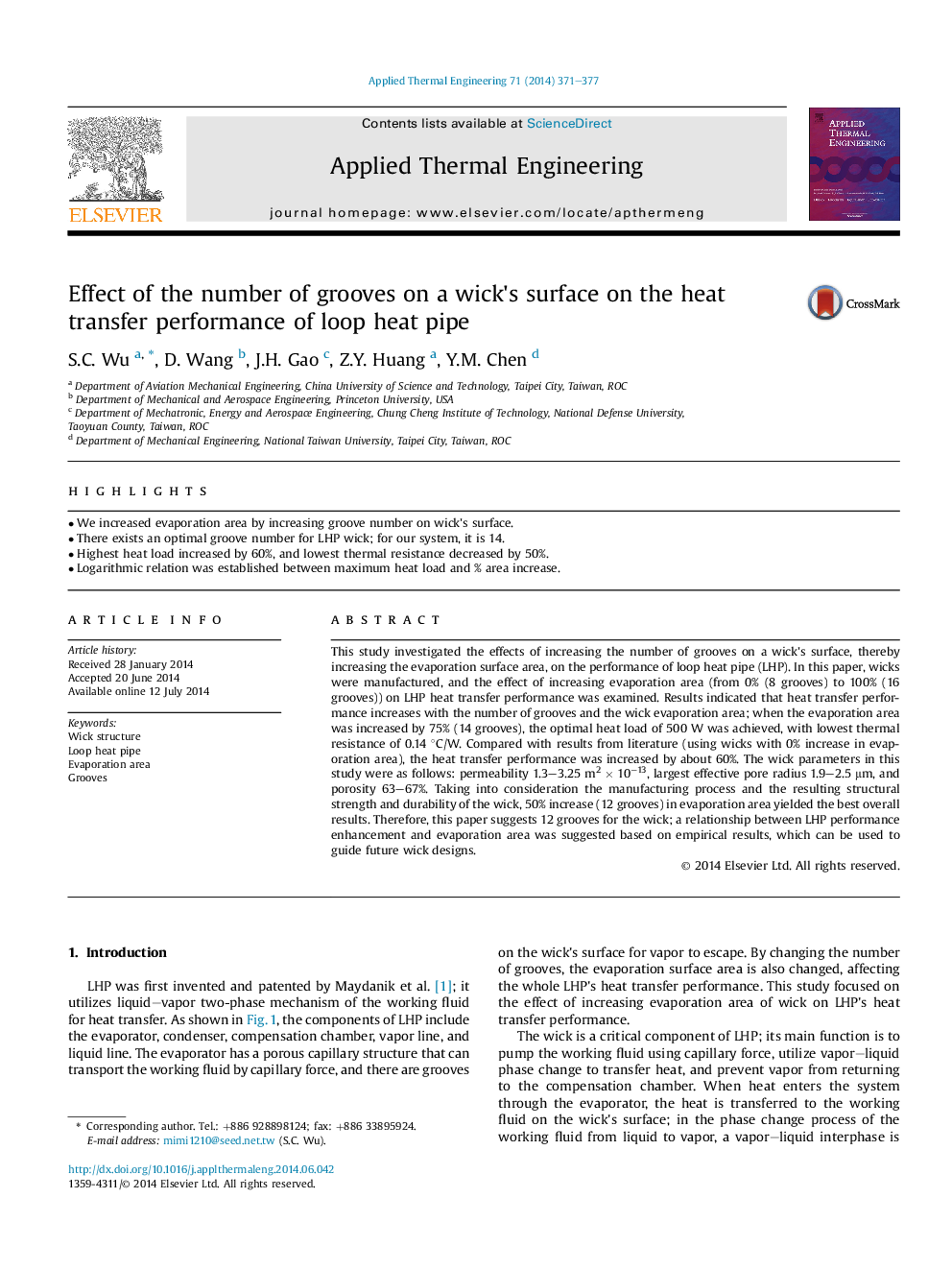| کد مقاله | کد نشریه | سال انتشار | مقاله انگلیسی | نسخه تمام متن |
|---|---|---|---|---|
| 646116 | 884554 | 2014 | 7 صفحه PDF | دانلود رایگان |
• We increased evaporation area by increasing groove number on wick's surface.
• There exists an optimal groove number for LHP wick; for our system, it is 14.
• Highest heat load increased by 60%, and lowest thermal resistance decreased by 50%.
• Logarithmic relation was established between maximum heat load and % area increase.
This study investigated the effects of increasing the number of grooves on a wick's surface, thereby increasing the evaporation surface area, on the performance of loop heat pipe (LHP). In this paper, wicks were manufactured, and the effect of increasing evaporation area (from 0% (8 grooves) to 100% (16 grooves)) on LHP heat transfer performance was examined. Results indicated that heat transfer performance increases with the number of grooves and the wick evaporation area; when the evaporation area was increased by 75% (14 grooves), the optimal heat load of 500 W was achieved, with lowest thermal resistance of 0.14 °C/W. Compared with results from literature (using wicks with 0% increase in evaporation area), the heat transfer performance was increased by about 60%. The wick parameters in this study were as follows: permeability 1.3–3.25 m2 × 10−13, largest effective pore radius 1.9–2.5 μm, and porosity 63–67%. Taking into consideration the manufacturing process and the resulting structural strength and durability of the wick, 50% increase (12 grooves) in evaporation area yielded the best overall results. Therefore, this paper suggests 12 grooves for the wick; a relationship between LHP performance enhancement and evaporation area was suggested based on empirical results, which can be used to guide future wick designs.
Journal: Applied Thermal Engineering - Volume 71, Issue 1, 5 October 2014, Pages 371–377
